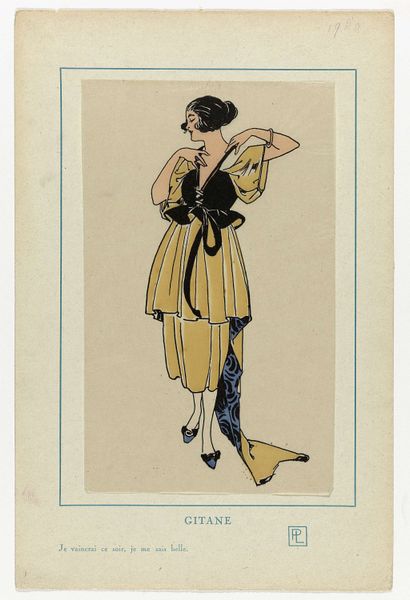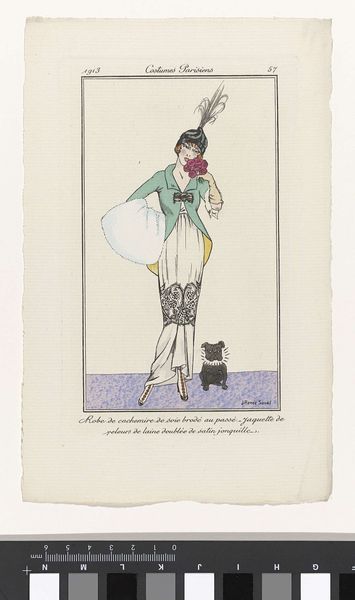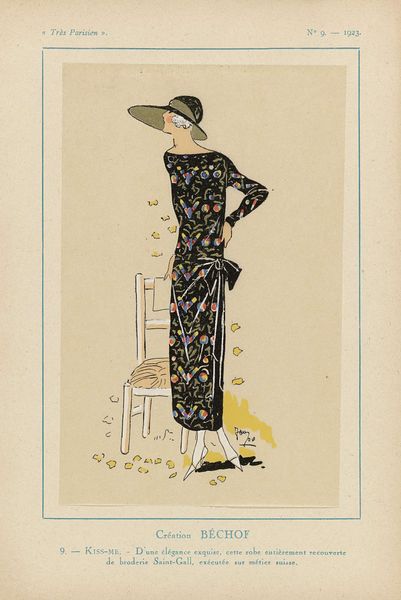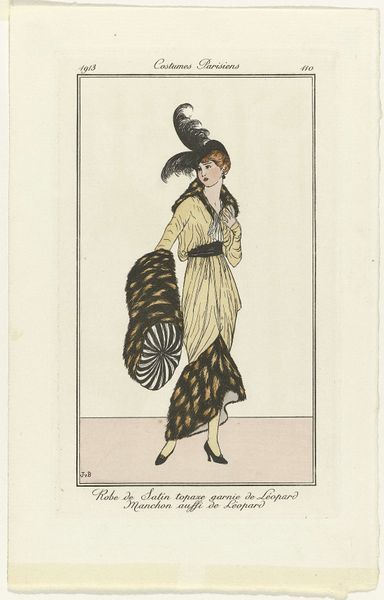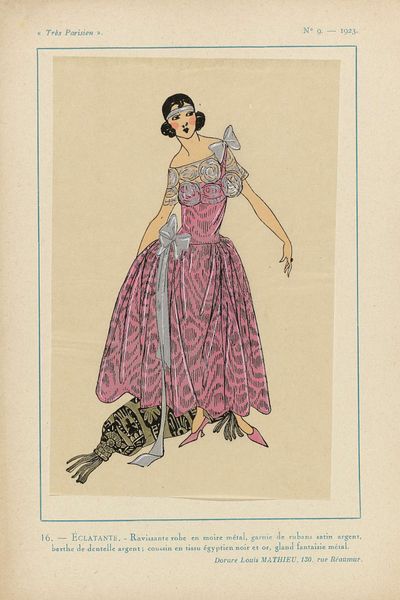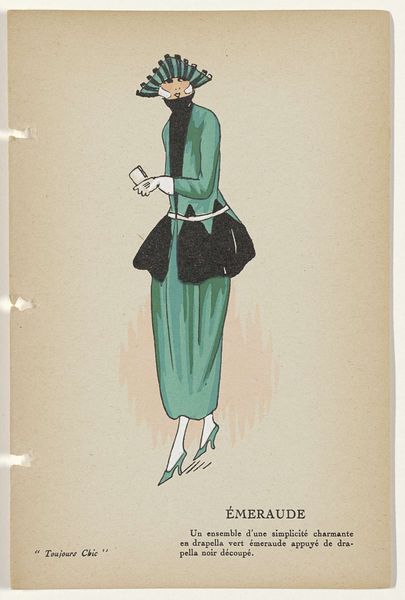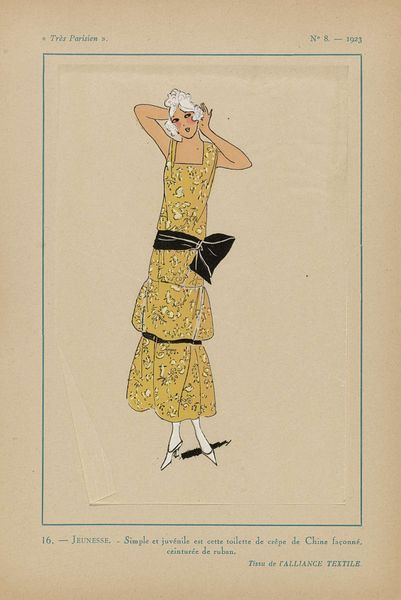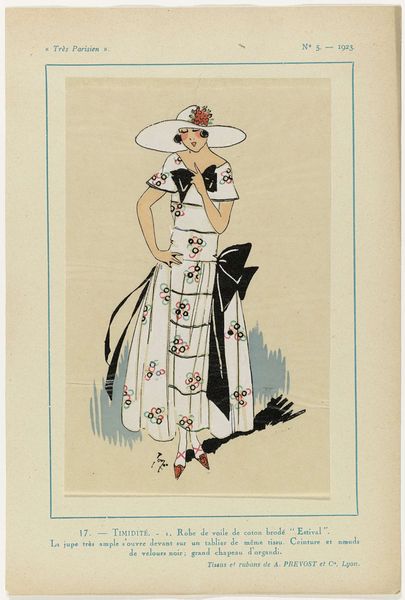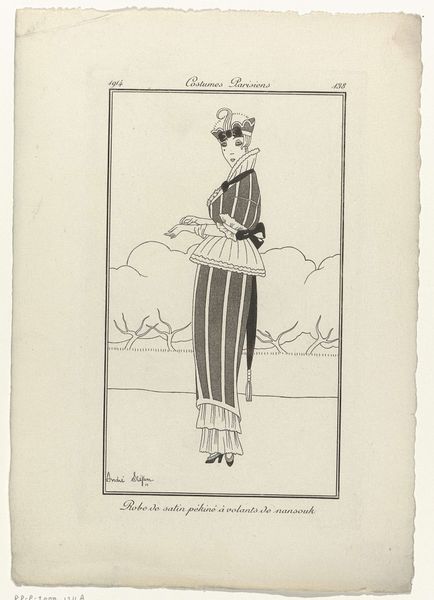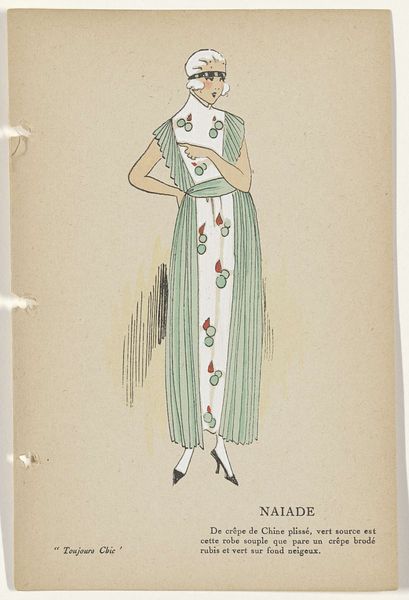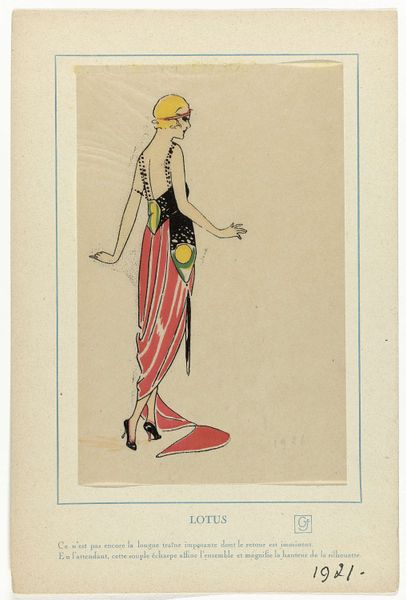
Journal des Dames et des Modes, 1912, Costumes Parisiens, no. 10: Robe de promenad (...) 1912
0:00
0:00
print, watercolor
#
portrait
#
art-nouveau
# print
#
watercolor
#
watercolour illustration
Dimensions: height 180 mm, width 110 mm
Copyright: Rijks Museum: Open Domain
Curator: This watercolour print by Umberto Brunelleschi, titled "Journal des Dames et des Modes, 1912, Costumes Parisiens, no. 10: Robe de promenade...", offers us a glimpse into Parisian fashion during the early twentieth century. The artwork, from 1912, showcases a woman in an elegant walking dress. What’s your take? Editor: My first impression is one of subdued elegance, almost melancholic. The colors are soft, the lines delicate. She appears caught between worlds, doesn’t she? The towering hat, while stylish, adds to a sense of formality, a barrier. I wonder what stories that dress could tell. Curator: Indeed. Notice the precise details – the “Surah à damiers”, referring to a checked silk fabric, and the painted taffeta. This print served a function, communicating trends to seamstresses and their clientele. It shows a clear intersection between fashion, craft and artistic production. Editor: Absolutely. The handmade element feels so central. Those delicate watercolours depicting the floral designs... there’s an intimacy that's hard to replicate today. And that peculiar hat – a straw hat with a tuft of "duvet de cygne,” swan down! It speaks to the playful extravagance of the era. The contrast with the somber colors adds an emotional depth, though. Curator: Considering the context of 1912, on the eve of World War I, this meticulous depiction of luxurious textiles can be read as representative of pre-war optimism. The consumption and display of material wealth—note the labor intensive painting technique—became charged with societal meaning. Editor: Yes, that tension, the quiet before the storm. Knowing what's coming lends it a spectral beauty. It makes you wonder about her, doesn't it? Where did she walk? What was she dreaming of? The artist captured not just a dress, but a moment in time. Curator: Precisely. This print offers us not just an aesthetic experience, but also a window into understanding labor practices, class structures, and the material conditions of Parisian society at that time. Editor: It is truly poignant – a beautiful artifact whispering stories of a world poised for transformation, elegantly captured in watercolor and print.
Comments
No comments
Be the first to comment and join the conversation on the ultimate creative platform.
